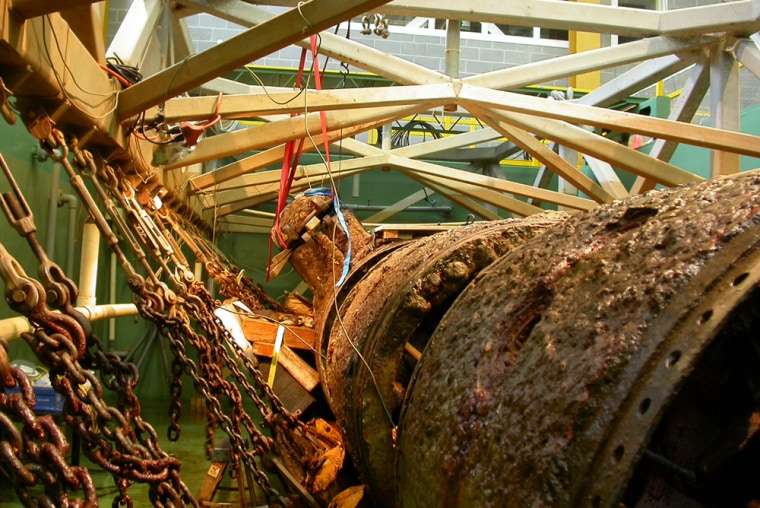Scientists on Tuesday removed the rear hatch on the Confederate submarine H.L. Hunley, although the work won't immediately remove the questions surrounding the sinking of the sub in 1864.
The 40-foot, hand-cranked sub, the first in history to sink an enemy warship, sank off Charleston after sending the Union blockade ship Housatonic to the bottom on Feb. 17, 1864.
The eight Hunley crew members went down with the sub.
The Hunley has two towers with hatches but the rear hatch apparently was locked. After it was removed from the sub, which is in a conservation tank at a lab in North Charleston, the hatch was taken to the lab for X-rays.
The way the sub was configured, most of the crew would have had to have opened that hatch and escaped through the back tower.
The fact it was locked indicates the crew didn't sense an emergency in the last minutes of the sub, said state Sen. Glenn McConnell, R-Charleston and chairman of the South Carolina Hunley Commission.
"It ends any speculation that there was panic on board," he said.
Earlier this summer, scientists found that the forward hatch, where Capt. George Dixon would have been piloting the craft, was unlocked.
It's unclear whether that might have been an attempt to escape or simply bring more air into the submarine. Scientists have also speculated it may have simply been damaged while the submarine sat on the ocean floor for 136 years.
"I don't think there was any attempt to escape the submarine that night," McConnell said. "Any attempt to get out of the submarine would have been to the back."
The remains of the crewmen, he said, were all found at their duty stations.
Removing the rear hatch will allow scientists a chance to study a section of the sub that they have not been able to get to since it was raised more than six years ago.
The rear hatch also contains a glass view port which must be removed before scientists can conserve the Hunley.
With the rear hatch locked "the story turns back to the front tower and why was it unlocked," McConnell said. "Did it get damaged or did he (Dixon) have it unlocked for a purpose?"
McConnell said the explanation may turn again to whether the crew suffocated, perhaps miscalculating the amount of oxygen they had.
One important clue will be an X-ray of the valves of the pumping system which are now encrusted with sediment.
The position of the valves should indicate whether the pump was set to take water in or out of the ballast tanks or, in the event the Hunley had taken on water, to pump it out of the crew compartment, McConnell said.
